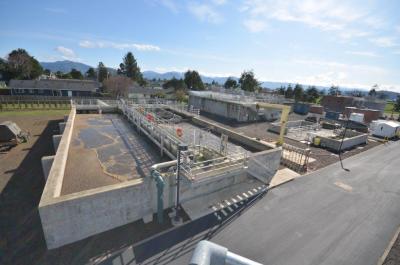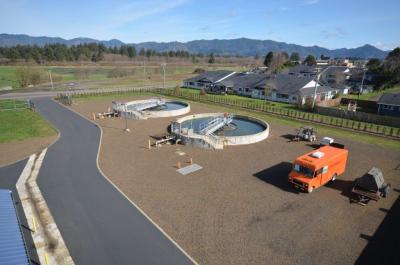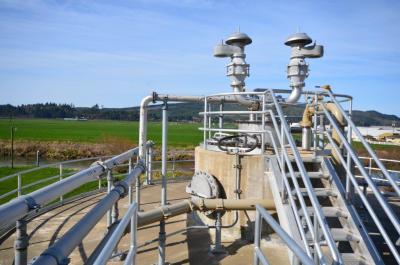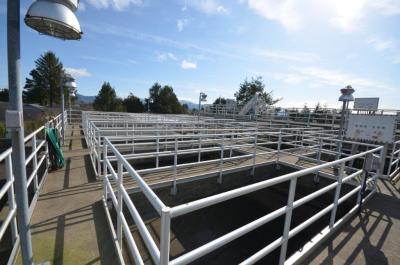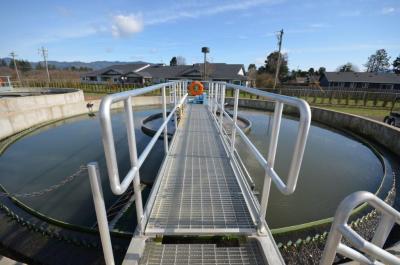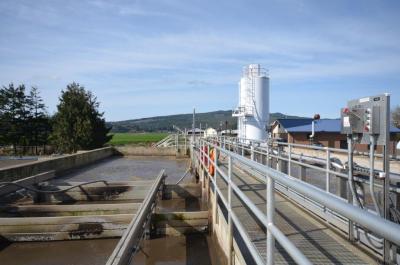Tillamook’s Wastewater Treatment Operations
Tillamook’s new wastewater treatment plant is now operating. It discharges about a half-million gallons of highly treated wastewater into the Trask on normal days, but has the capacity to discharge up to 4 million gallons a day during heavy rains.
In 2001 the Oregon Department of Environmental Quality (DEQ) ordered the City to undertake this major expansion and upgrade of its sanitary sewer and wastewater treatment facilities. Overall costs of the project, including acquisition of additional land, improvements to transmission lines, Evergreen Drive sewer improvements, 12th Street pump station improvements, engineering and construction management, totaled about $16 million.
History
Tillamook’s plant was constructed in 1948. It underwent a major upgrade in 1958 with new influent pumps, primary clarifier modifications, a trickling filter and a new primary digester.
In 1969, disinfecting equipment was added to the trickling filter and the rotating biological contactors (RBC’s) were installed.
In 1998, the city installed a new head works and a primary clarifier at a cost of about $1.4 million. However, the aging facilities in the rest of the plant prompted DEQ to put Tillamook under a corrective action plan.
In April of 2003, a Technical Advisory Committee comprised of city engineers held a series of meetings to discuss alternatives. In August of 2003, a Public Advisory Committee composed of more than a dozen local citizens who volunteered to help, began meeting with the TAC and the consultants, studying the facilities and evaluating options. The two committees selected their preferred plan in November of 2003. They came up with a plan that would have re-used the clarifier and added other components to dramatically improve the plant’s performance. It relied on existing “anaerobic” technologies.
However, DEQ ultimately ruled that the City should implement “aerobic” digestion. This method requires injecting oxygen into the process, relies on a different type of microbe and a different type of plant. These newer aerobic technologies produce a much cleaner effluent.
In the end, a combination solution was adopted. The City continues to make use of its 1998 primary clarifier as a “pre-treatment” tank before dumping the effluent into the new system to finish it off. The result is a hybrid process that employs anaerobic microbes and settling at the front end, and aerobic microbes at the finish. This system also helps handle the high flows that Tillamook gets in the rainy season.
To accommodate structures for the new process, in 2006 the City was able to purchase a tract of land on 3rd Street at the Trask River bridge, adjacent to the existing treatment plant. Construction of the new facilities began there in 2007.

